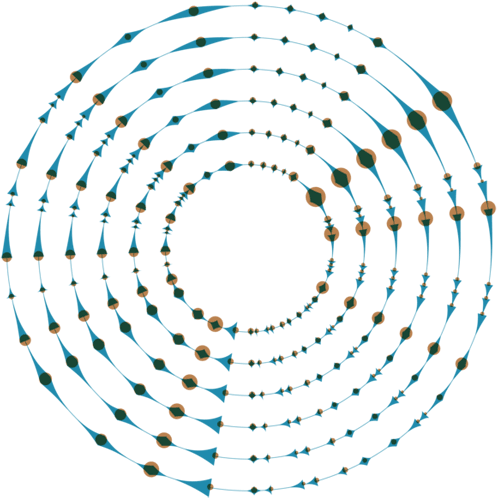How does Longplayer work?

The composition of Longplayer results from the application of simple and precise rules to six short pieces of music. Six sections from these pieces – one from each – are playing simultaneously at all times. Longplayer chooses and combines these sections in such a way that no combination is repeated until exactly one thousand years has passed. At this point the composition arrives back at the point at which it first started. In effect Longplayer is an infinite piece of music repeating every thousand years – a millennial loop.
The six short pieces of music are transpositions of a 20’20” score for Tibetan Singing Bowls, the ‘source music’.[1] These transpositions vary from the original not only in pitch but also, proportionally, in duration.[2]
Every two minutes a starting point in each of the six pieces is calculated, from which they then play for the next two minutes. Each starting point is calculated by adding a specific length of time to its previous starting point.[3] For each of the six pieces of music this length of time is unique and unvarying. The relationships between these six precisely calculated increments are what gives Longplayer its exact one thousand year long duration.
Rates of Change
In the diagram below, the six simultaneous transpositions are represented by the six circles, whose circumference represents the length of the transposed source music. The solid rectangles represent the two minute sections presently playing. The unique increments by which these six sections advance determine their respective rates of change. These reflect different flows of time, from a glacial crawl to the almost perceptible sweep of an hour hand. The incremental advance of the third circle, is so small that it will take the full thousand years for it to pass once through the source music. Conversely the increment for the second circle is such that it makes its way through the music every 3.7 days. The diagram updates every 2 minutes.

Notes
1. One is the original 20’20” score, one is an octave below, and the others are 7 semitones below, 5 semitones below, 5 semitones above and 7 semitones above, respectively.
2. The transpositions effect the lengths of each piece differently. Lowering their pitch lengthens them, and conversely raising their pitch shortens them, just as changing the speed (and thus the duration) of a record will alter its pitch.
3. In other words, the pieces of music keep starting again, each time from a point slightly advanced from where they started 2 minutes earlier.

